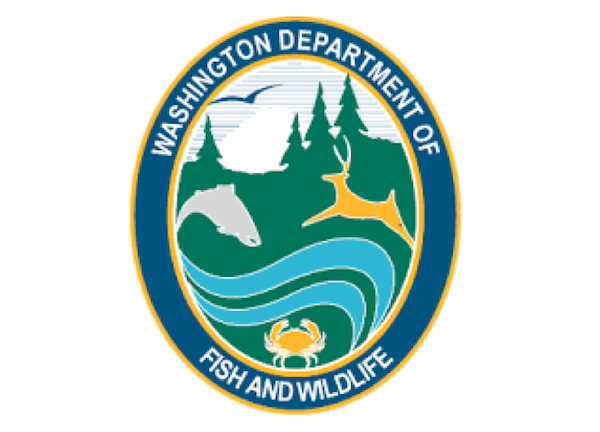Fish Report for 3-14-2022
WDFW seeks public input on 2022 proposals for Washington’s ocean salmon fisheries

by WA Department of Fish & Wildlife Staff
3-14-2022
Website
OLYMPIA – Fishery managers have developed options for Washington’s ocean salmon fisheries that reflect an expected improvement to coho returns to the Columbia River and many coastal areas in 2022.
The Pacific Fishery Management Council (PFMC), which brings tribal, federal, and state entities together to establish fishing seasons in ocean waters 3 to 200 miles off the Pacific coast, on Monday approved three options for ocean salmon fisheries for public review. These ocean options will help inform other Washington salmon fisheries as the season-setting process continues.
“This year’s options continue to provide needed protections for Puget Sound Chinook stocks, but also allow for a substantially larger coho quota for Washington’s recreational fisheries compared to 2021,” said Kyle Adicks, intergovernmental salmon manager for the Washington Department of Fish and Wildlife (WDFW). “This is the first time in several years that we haven’t included a ‘no fishing’ option, which is a positive development. We’ll still have to be conservative with fishery openings and responsive in-season to protect weaker stocks.”
The options for 2022 include the following quotas for state recreational fisheries off the Washington coast:
Option 1: 32,500 Chinook and 176,400 marked coho. This option includes Chinook and hatchery coho fisheries beginning June 18 in all areas.
- Columbia River area, Westport, La Push and Neah Bay (Marine Areas 1, 2, 3 and 4): June 18-Sept. 30 Chinook and marked coho fishery. No Chinook retention east of the Bonilla-Tatoosh line beginning Aug. 1.
Option 2: 30,000 Chinook and 155,400 marked coho. In this option fisheries open June 25.
- Columbia River area, Westport, La Push and Neah Bay (Marine Areas 1, 2, 3 and 4): June 25-Sept. 30 Chinook and marked coho fishery. No Chinook retention east of the Bonilla-Tatoosh line beginning Aug. 1.
Option 3: 26,500 Chinook and 134,400 marked coho. In this option, fisheries open at different times in June, and close earlier in September.
- La Push and Neah Bay (Marine Areas 3 and 4): June 18-Sept. 18 Chinook and marked coho fishery. No Chinook retention east of the Bonilla-Tatoosh line beginning Aug. 1.
- Westport (Marine Area 2): June 26-Sept. 18 Chinook and marked coho fishery. This area would be open five days per week (Sunday-Thursday) under this alternative.
- Columbia River Area (Marine Area 1): June 26-Sept. 18 Chinook and marked coho fishery.
Under all of these scenarios, fishery managers will monitor the number of salmon caught by recreational anglers and may close earlier than the above dates if quotas are met. For more details about the options, visit PFMC's webpage at pcouncil.org. There will be a public hearing on the alternatives at 7 p.m., Tuesday, March 22. More information on that meeting is available on PFMC’s website.
Managers use public feedback on these options to negotiate a final season among states and tribes represented at PFMC, refined to incorporate preferences shared by the public.
Chinook and coho quotas and seasons approved by the PFMC will be part of a comprehensive 2022 salmon-fishing package, which includes marine and freshwater fisheries throughout Washington. State and tribal co-managers will complete the tentative 2022 salmon fisheries package in conjunction with PFMC during its April 6-13 meeting.
WDFW has scheduled additional public meetings in March and April to discuss regional salmon fisheries. In addition to attending virtual meetings, other ways the public can participate in the state’s process include:
- Online comments: The public can provide comments on WDFW’s proposed fisheries at: wdfw.wa.gov/fishing/management/north-falcon/public-input.
- Conference calls and daily briefings: During the final days of negotiations, state fish managers plan to hold briefings, which will be available via conference call or recording following the briefing.
For a full timeline of the state’s North of Falcon process, including a public meeting schedule with opportunities to participate and provide public feedback, visit WDFW’s North of Falcon public meeting schedule web page. These meetings will be conducted online in 2022 and be available to the public to watch or listen via webinar or conference call.
The collaborative state and tribal salmon season-setting process known as North of Falcon refers to waters north of Oregon’s Cape Falcon, which marks the southern border of Washington’s management of salmon stocks.
The Washington Department of Fish and Wildlife works to preserve, protect, and perpetuate fish, wildlife and ecosystems while providing sustainable fish, wildlife, and recreational and commercial opportunities.
More Reports
Volunteers sought as WDFW marks millions of hatchery salmon for release

3-13-2022
Paid positions also available as marking effort continues OLYMPIA – The Washington Department of Fish and Wildlife (WDFW) is seeking...... Read More
WA Department of Fish & Wildlife Reports
for Tuesday, March 8th, 2022: Public invited to provide input on 2023-2024 coastal recreational bottomfish fisheries

Website Hosting and Design provided by TECK.net